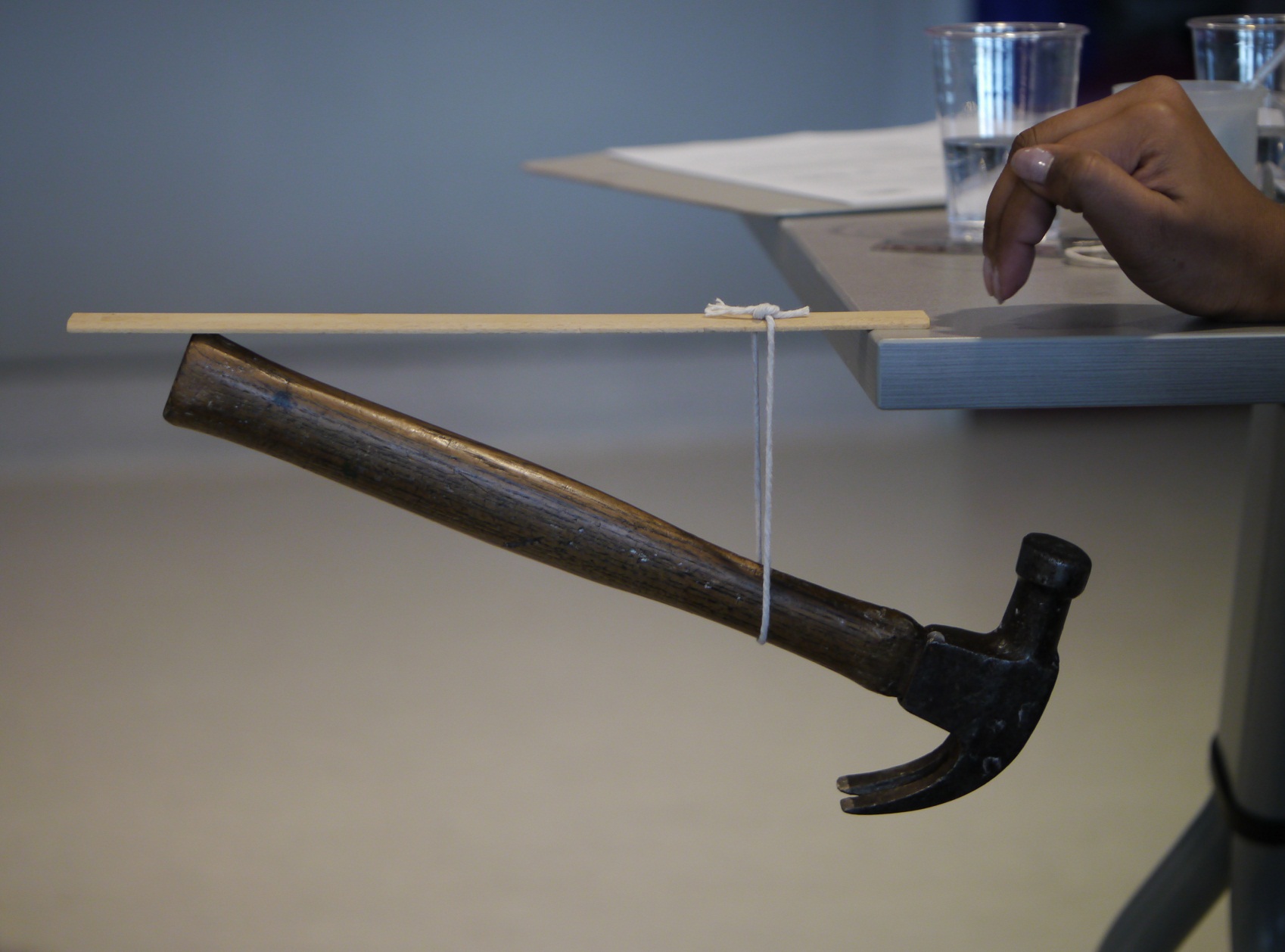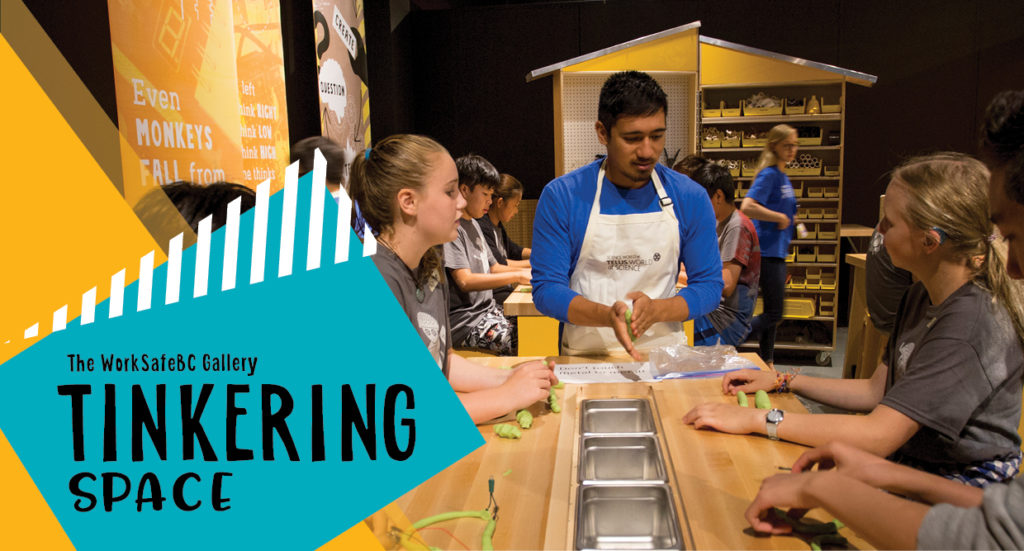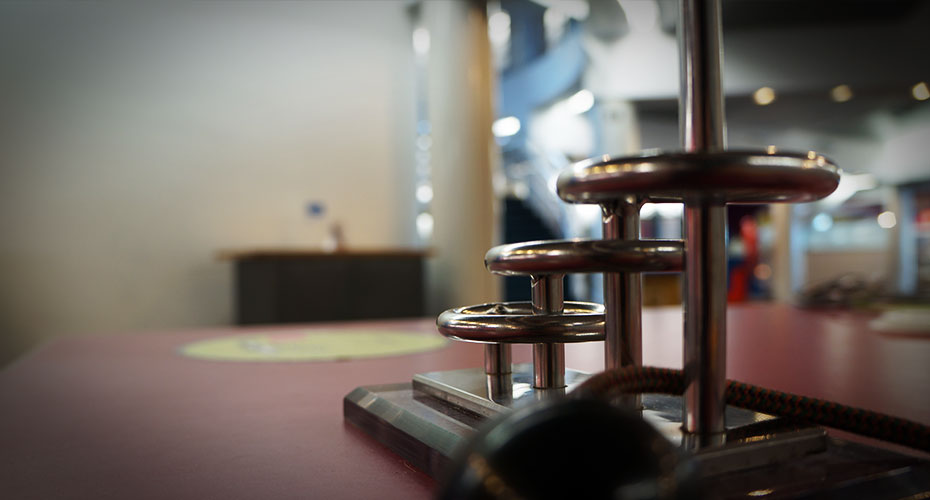In this activity, students witness a trick that appears to defy logic. By examining the object's centre of gravity and its base of support, the physics behind the illusion is unveiled.
The centre of gravity of the system (ruler + hammer) is the centre of the head of the hammer, which is directly below the tip of the ruler. As long as the table supports this point, the system stays balanced!
Balance Illusion
Objectives
-
Find the centre of gravity of an object.
Materials
-
Per Demo or Group:
table
hammer
stiff rubber band or elastic hair band
wooden ruler (30 cm)
Key Questions
- Does adding the weight of the hammer change the centre of gravity of the ruler? If so, in which direction? What is supporting the ruler?How much of the ruler has to be supported by the table in order to be balanced?
- What is supporting the ruler?
- How much of the ruler has to be supported by the table in order to be balanced?
What To Do
- Lie the ruler flat against the table, with 2/3 of its length hanging off the edge.
- Ask a student to hold down the ruler against the table while you setup the rest of the illusion.
- Place the handle of the hammer against the underneath of one end of the ruler (furthest from the table). Suspend the head of the hammer from the other end of the ruler with the rubber band.
- Tell the volunteer to let go of the ruler. The hammer/rubber band/ruler setup should balance on its own.
- Slowly slide more and more of the ruler off the table until it is hanging by its tip.

Extensions
- Hang a plumb line from the support point on the table and see where it meets the hammer.
- Try the “Forks & Toothpick Balance” trick found on the Internet. Where is the system’s centre of gravity? Where is its support?
Other Resources
Harvard Natural Science | Fork & Toothpick Balance Experiment

